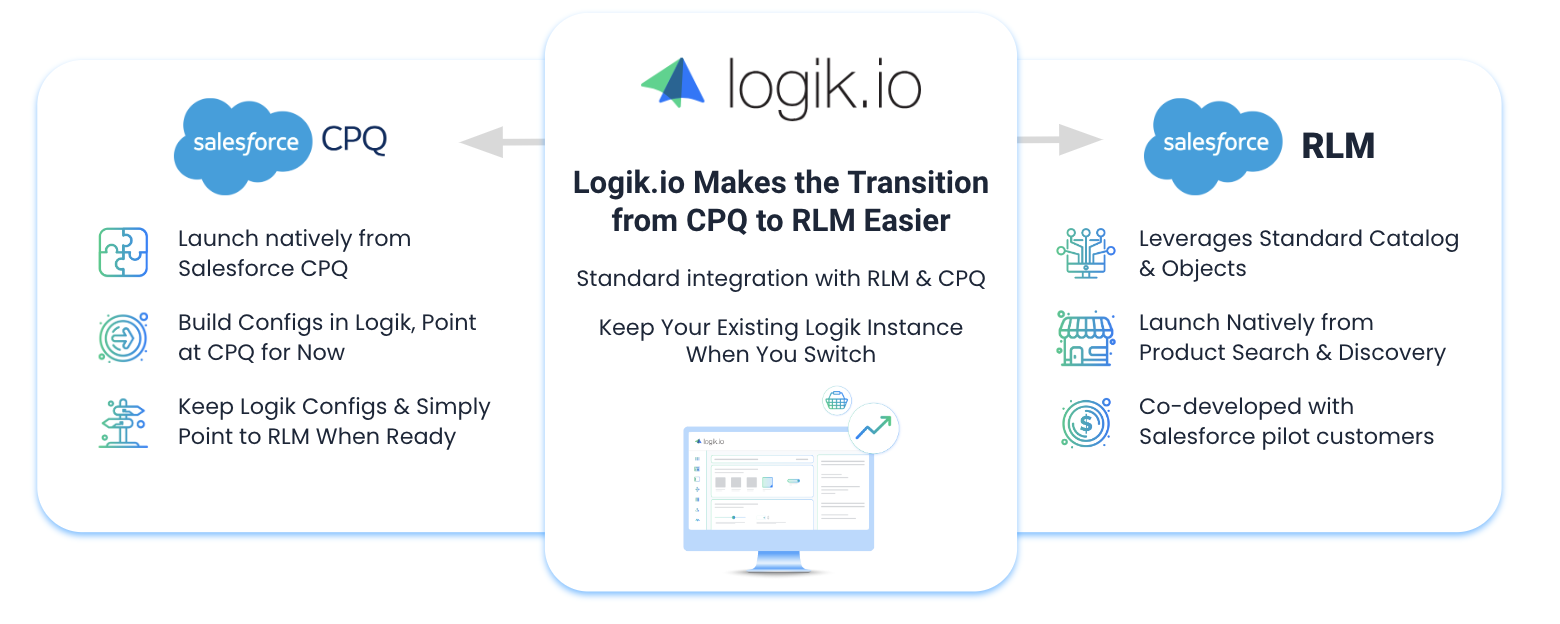When looking at the development of commerce technology, the impact of recent digitization cannot be overstated. As a result, there is a paradigm shift affecting both buyers and sellers in equal measure when it comes to the structure of sales experiences. With business goods and services and buyer expectations each becoming increasingly more complex, a system that facilitates easy, maintainable orders – like Logik.io – is key for B2B eCommerce solutions.
The concept of “consumerization” has rapidly accelerated digital commerce offerings, as businesses try to keep pace with buyer demands that require self-driven, intelligently-reactive sales settings at the tip of their fingers. Some businesses have been relatively successful at manipulating existing tech stacks to expand configuration offerings and implement guided selling techniques in the face of such demands. Still, there is a limit to the amount of customization a legacy system can withstand.
To truly future-proof your business, reduce administrative requirements and elevate your overall buyer experience, a larger shift has to occur – one that positions the market more toward innovation, and farther from the status quo.
Enter the commerce logic engine – what we define as a solution that enables businesses to sell their products and services more effectively through direct sales teams and digital commerce channels with more guided, flexible, and interactive selling experiences. This is crucial in the realm of B2B eCommerce.
Augmenting configure, price, quote (CPQ) software and expanding eCommerce offerings, a commerce logic engine streamlines the sales funnel on front and back ends, bringing buyers and sellers that much closer to the end of a happily-made sale.
Simply put, a commerce logic engine helps you sell more, sell faster, and maintain less.
How It Works
With a commerce logic engine, you can import any set of product rules, recommendations, restrictions, or requirements to serve as roadmaps for buyer experiences. Once fully set up, the system can then leverage its own bank of knowledge – the “logic” in question – to help both sales reps and self-service buyers identify and configure their optimal order. With attribute-based configuration protocol and less unique code to manage than existing systems, such an engine can easily be adapted to any CPQ or eCommerce platform, making it an essential component of B2B eCommerce solutions.
Additionally, buyer preferences can be gathered and incorporated into the engine’s logic via front-facing questionnaires or interactive guided selling paths, aligning with more traditional, direct sales conversations of past decades. Digitization is not a reason to drop person-first sales techniques, and a commerce logic engine can help find the happy medium for buyers looking for both convenience and care from their sellers.
The way in which commerce logic engines deploy allows for a unique consideration of buyer end goals, which is useful not just in the immediate, but in the long-term as well. The more your business knows about why your audience is in the market for your product or service, what benefit it’s going to provide to them, possible misgivings or competitive alternatives in the background, and so on, the better you can tailor their experience and get ahead of anticipated desires.
The goal is to bring the most successful and engaging aspects of traditional sales into omni-channel digital experiences, leaving businesses with a competitive edge and empowered, satisfied clientele who feel confident in their spends.
Experience alone is not enough to justify the presence of commerce logic engines, though. From a maintenance perspective, the amount of labor and expertise required to maintain and expand a commerce logic engine falls far below that of a legacy CPQ or eCommerce stack. There may be an initial lift when first implementing a commerce logic engine, but it is an effort that will pay for itself time and time over.
Once a commerce logic engine is established, complex orders can be processed faster, sales BOMs and manufacturing BOMs can be segmented out and presented separately, and sales reps or self-guided buyers can drop in and navigate the engines with little to no technical history. This is particularly beneficial in B2B eCommerce, where the complexity and volume of orders are typically higher than in B2C scenarios.
Use Case
Let’s say you’re trying to get a birthday present together for your mom. You hop onto the website of a jeweler that makes custom family-inspired jewelry, with gems representing the birthstones of loved ones in custom settings. The necklace featured on the homepage catches your eye, and you decide that’s the style you’d like to order.
If the jeweler had a commerce logic engine set up to support their eCommerce platform, the rest of your experience could look something like this:
Once clicking through, you’re presented with a dialogue box asking 4 questions. You enter in how many gems you want on the necklace, the birth months for each family member being represented, a preference between a gold or silver chain, and overall chain length. For the chain length segment, there’s a visual guide that shows where on the body a necklace would fall for a short chain, medium chain, and long chain.
You choose a 3-gem setting, with stones for birthdays in March, October and December – all of mom’s kids together, her favorite. Thinking back to the jewelry she frequently wears, you opt for a medium length silver chain base. As soon as you enter your preferences, the screen refreshes and you see a beautiful, interactive rendering of the necklace, along with the base price and recommendations for an additional dust cloth and gift wrapped case. You add the necklace, dust cloth, and gift wrap option to your cart, enter in your card information, and submit the order to be manufactured and shipped the following week.
Pretty painless, right?
Before you ever hit the website, the administrators for the jeweler had an opportunity to construct the logic for the engine itself. Things like base price for gems, relationships between months and gems, constraints on total number of gems per setting, etc. are all outlined in these rules. Attribute-based configuration allows for a smaller number of total line items and variables to be set up in the system, leaving significant bandwidth for real-time rendering and processing.
Because of the existing logic, you never had to tell the system which gems specifically to add to the necklace. On the back end, pre-programmed rules have already defined the relationship between birth months and their respective gem – inputting “March” yields an aquamarine stone in the final necklace rendering, and so on. There was no need to save, refresh and confirm each selection one by one, as the engine was set to accommodate multiple variables in a single order.
Similarly, the visual selection for chain length did not actually list the clasp-to-end length in units, which most buyers don’t have an immediate point of reference for in context. Instead, you chose the length that looked best on the model, and the system substituted out the appropriate length in inches for the order itself.
Successful eCommerce hinges on sales, so what better opportunity to bump the total dollar value of the order than with a celebratory, priced gift wrap being recommended before checkout? The jeweler knows that items from the custom line are more often than not gifts, and can set logic to suggest upsells accordingly.
At every step of the process, there is a focus on need and/or solution, backed in the tech stack, supporting overall sales with a positive experiential impact on the buyer. This synthesizes the concept of a commerce logic engine entirely – again, to sell more, sell faster, and maintain less. This efficiency is critical for B2B eCommerce solutions, where streamlined processes can significantly impact the bottom line.



